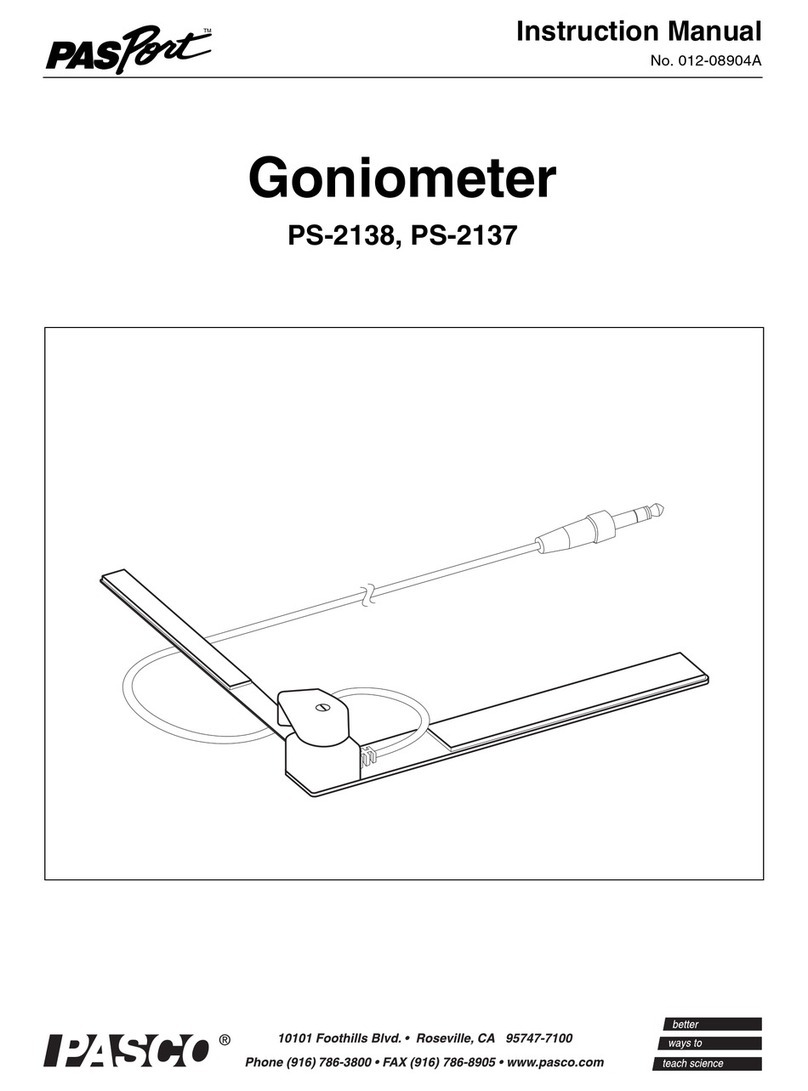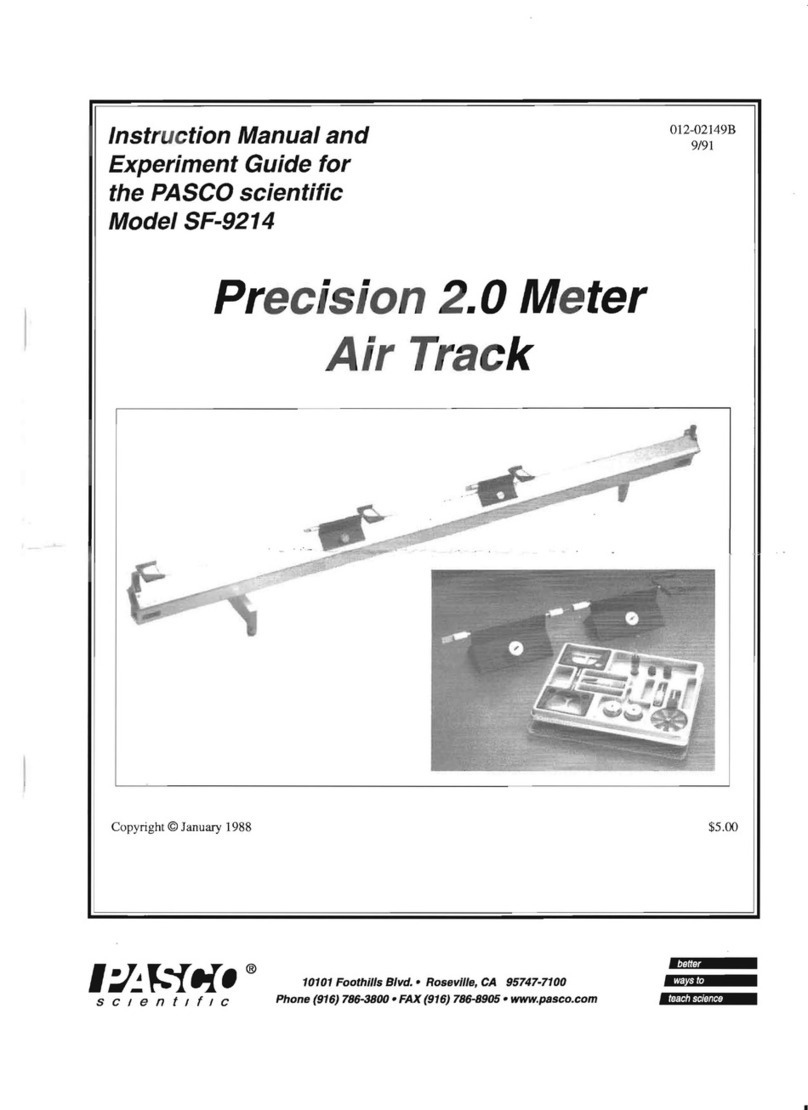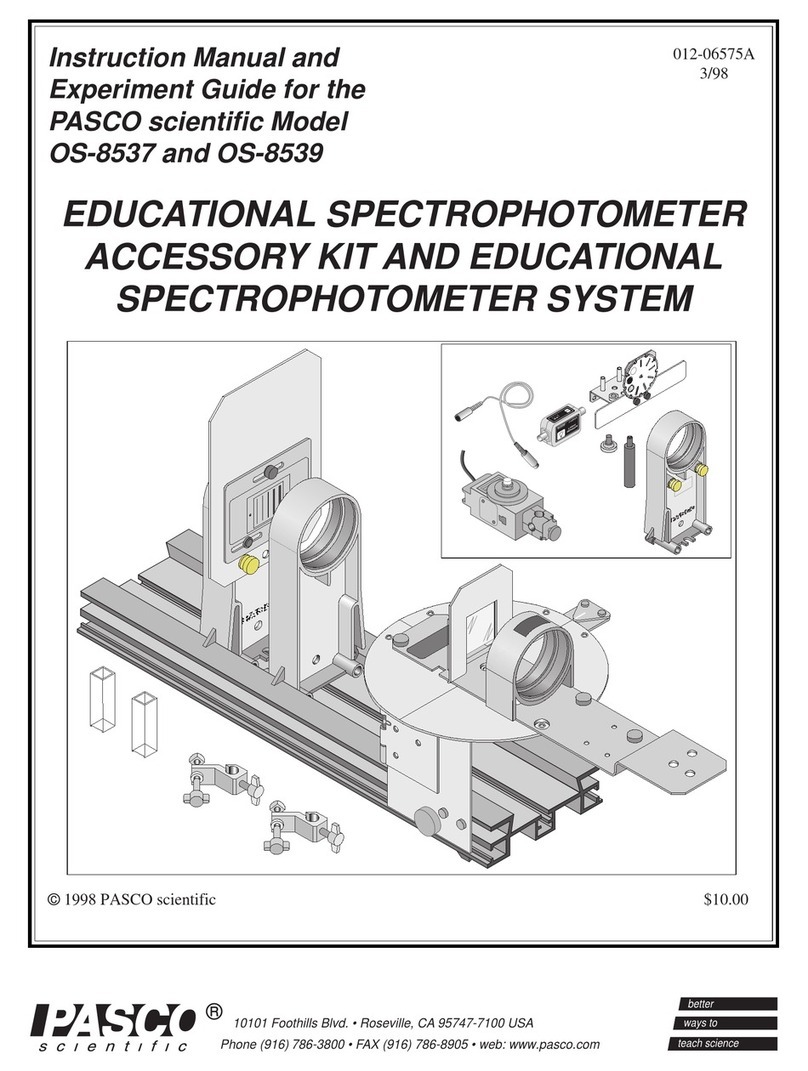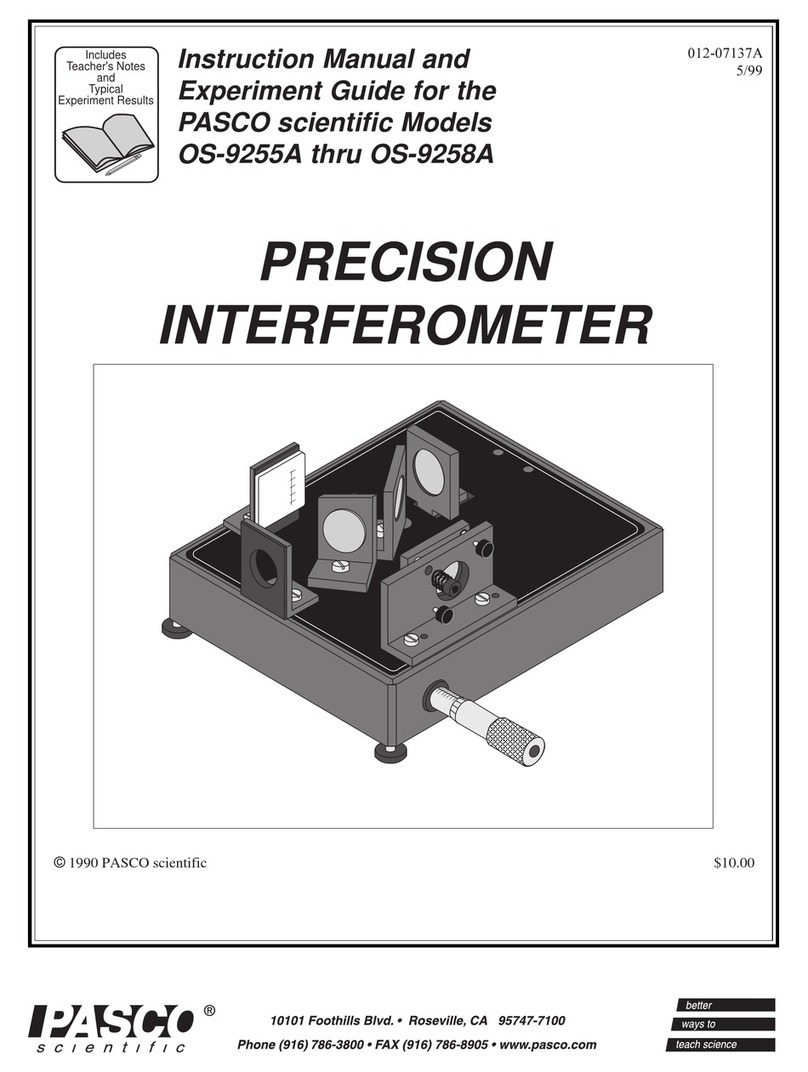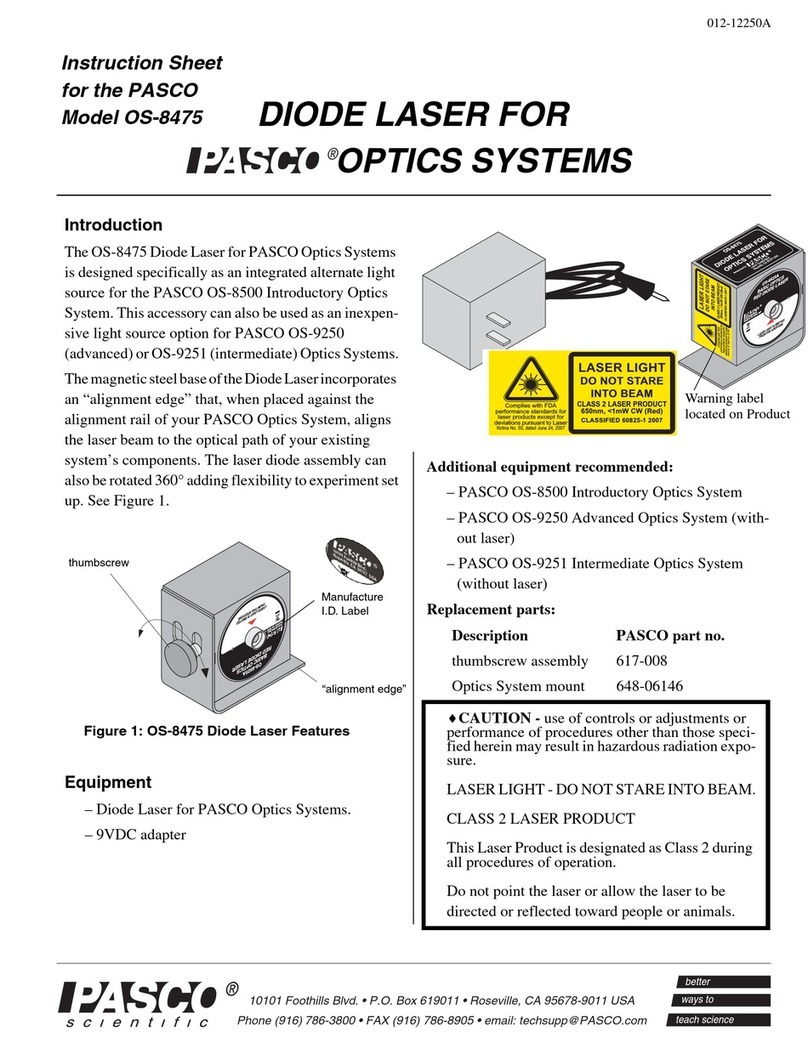
012-03175E
4
To measure the total capacitance:
①Turn on the Electrometer and zero the meter. Clip
the test lead of the probe to the inside cylinder of
your ice pail and the ground lead to the outside cyl-
inder (see Figure 4).
②Use a DC power supply or a statically charged ob-
ject to charge your proof plane.
③Place the proof plane inside the inner cylinder of the
ice pail and adjust the FUNCTION switch to get a
meter reading near full scale. (For convenience, you
may want to touch the proof plane to the inside of
the ice pail and then remove the proof plane. The
effect on the voltage reading should be negligible.)
Record the voltage as Ve. Do not discharge the
Electrometer.
④Take a capacitor of known capacitance, Ck. Ground
the leads of the capacitor to be sure it is fully dis-
charged, then connect the capacitor between the in-
ner and outer cylinder of the ice pail. With the
proof plane still inside the ice pail, record the meter
reading as Vk.
⑤The capacitance of the Electrometer, Ce, can now be
calculated as: Ce = CkVk/(Ve-Vk).
ä
EXPLANATION: This measurement is
shown schematically in Figure 3. First the
Electometer is charged with an unknown charge
Q, that must satisfy the equation Q = CeVe, where
Ceis the total capacitance of the system and Veis
the Electrometer reading. Then the second
capacitor is connected in parallel with the capaci-
tance of the Electrometer. The total capacitance
is now Ce+ Ck. The charge Q has not changed,
but now satisfies the equation Q =
(Ce+ Ck)Vk, where Vkis the new Electrometer
reading. Combining the two equations gives,
CeVe= (Ce+ Ck)Vk, or Ce= CkVk/(Ve -Vk).
If you want to use the Electrometer with a different set
of test leads, or a different ice pail, or even a different
proof plane, the capacitance may be different, and you
will need to repeat the above procedure to measure the
new capacitance.
ä
NOTE: The capacitance of the Electrometer
is 30-35 pf. With the test probe, the total capaci-
tance is approximately 150 pf. For best results,
measure the total capacitance.
Measuring Charge by Contact
Charges can also be measured by contact. You’ll find, for
example, that if you touch the charged proof plane to the
inside cylinder of the ice pail, the Electrometer reading will
generally remain relatively unchanged. This is because the
total capacitance is only negligibly affected by the proof
plane. This may not always be the case, however.
In general, contact measurements can be carried out in
much the same way as inductive measurements using
the ice pail. Touch the object with the test probe,
record the voltage V, and use Q = CV to calculate the
charge. However, if you suspect the object for which
you are measuring the charge appreciably affects the
total capacitance of the system, you will need to
remeasure the capacitance as described above.
Measuring Voltage
Voltage can be measured as with any voltmeter.
Connect the leads to the circuit, set the range (3, 10,
30, or 100 volts full scale), and read the voltage on the
meter.
Measuring Current
The Electrometer can be used for indirect current
measurements in many situations, though it is no
substitute for a good ammeter. Connect the Electrom-
eter leads across a known resistance in the circuit and
measure the voltage. Use Ohm’s law (Voltage =
Current x Resistance) to determine the current. The
effect of the Electrometer on the circuit will be negli-
gible in most circuits due to its exceedingly high input
impedance. However, the voltage drop across the
resistor must be within the voltage range of the Elec-
trometer.
If it is not convenient to hook the Electrometer across a
known resistance in the circuit, a precision resistor can
be connected between the input leads of the Electrom-
eter. The circuit can then be broken, as for connection
to a standard ammeter, and connected in series with the
precision resistor. Again, measure the voltage across
this resistor and calculate the current. (The problem
with this technique is that the resistance must be high
enough so the voltage drop is easily measured, but low
enough so it doesn't significantly affect the current
through the circuit.)
Using a Projection Meter
The OUTPUT connectors on the ES-9054B Electrom-
eter provide an output signal for driving a projection
meter, oscilloscope, or other monitoring device. The
output is proportional to meter deflection (within 10%)
with a
±3.6 VDC output corresponding to a full scale deflec-
tion. (The OUTPUT voltage depends only on meter
deflection. It is independent of the range setting of the
FUNCTION switch.)


